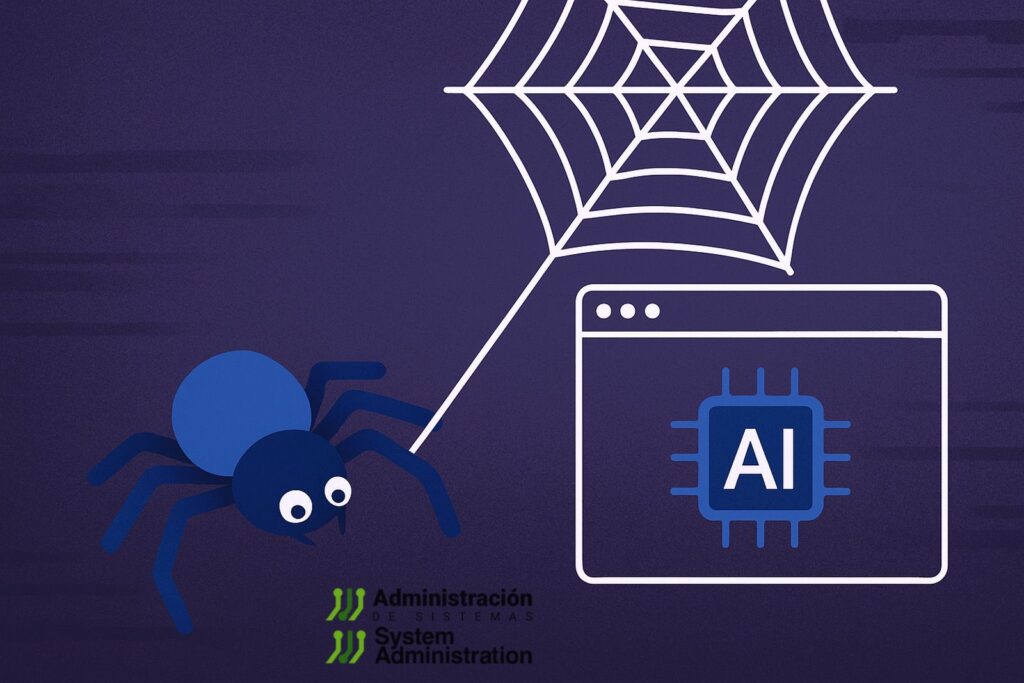Thousands of automated bots use Scrapy to collect web content at scale. While its design as an open-source framework is exemplary, its massive and opaque usage poses serious challenges to web server stability, bandwidth consumption, and security.
📌 A Double-Edged Sword in the Digital Ecosystem
In the world of web development and data scraping, Scrapy is synonymous with efficiency. Designed as an open-source framework to crawl websites and extract structured data, it’s one of the most complete tools in the Python ecosystem. But it’s also the workhorse of thousands of automated scraping bots that affect performance and security on millions of websites every day.
Behind many scraping campaigns that flood access logs with thousands of requests per second, one common denominator frequently appears: Scrapy.
⚙️ What is Scrapy and How Does It Work?
Scrapy is a high-level Python framework for building web spiders capable of navigating sites and extracting information. It’s built on Twisted, an asynchronous networking library that allows for concurrent operations without blocking system resources.
Key Features of Scrapy:
- Data selection using XPath, CSS selectors, or regular expressions.
- Export capabilities to JSON, CSV, or XML.
- Support for custom middlewares, extensions, and pipelines.
- Functions as both a scraper and a generic crawler.
- Interactive shell with IPython compatibility.
- Integration with storage backends: S3, FTP, local filesystem.
- Handles cookies, compression, authentication, proxy rotation, and more.
- Telnet console for real-time debugging.
🆚 Scrapy vs BeautifulSoup vs Selenium vs Puppeteer
| Tool | Language | Interface | Best For | Strengths | Limitations |
|---|---|---|---|---|---|
| Scrapy | Python | Framework | Large-scale scraping | High efficiency, async, modular architecture | Moderate learning curve |
| BeautifulSoup | Python | Library | Simple HTML/XML parsing | Very easy to use, strong encoding support | Slow on large documents |
| Selenium | Multi | UI Automation | Scraping dynamic JS pages | Emulates real user, full browser automation | Heavyweight, slow, browser required |
| Puppeteer | Node.js | Headless Chrome | Modern JavaScript websites | High precision in dynamic content extraction | High resource consumption |
Scrapy excels when speed, concurrency, and request volume are essential — such as in multi-domain crawlers or data mining projects. However, for JS-heavy pages (like those built with React or Vue), Puppeteer or Selenium are often better choices.
🚨 Scrapy as a Vector for Abusive Scraping
Though Scrapy is not designed for abuse, its power has made it a top threat to public websites. It is often used to:
- Clone entire site content.
- Feed datasets to train AI models without consent.
- Scrape ecommerce prices without authorization.
- Overload API endpoints and web forms.
Many websites report spikes in non-human traffic originating from Scrapy running on rotating IP networks — often cloud nodes — and bots that ignore robots.txt rules. Consequences include:
- Server CPU and disk overload.
- Chargeable bandwidth consumption.
- Misleading web analytics.
- Intellectual property violations.
🔐 How to Protect Against Scrapy
Blocking Scrapy isn’t trivial because it can disguise its user-agent or use proxies. Still, effective strategies exist to mitigate its impact:
✅ Server-side:
- Add rules in
.htaccess(Apache/OpenLiteSpeed) ornginx.conf:- Block suspicious User-Agents (Scrapy, python-requests, curl, etc.).
- Filter repeated high-frequency IPs.
- Restrict uncommon HTTP methods (HEAD, OPTIONS).
- Verify that “Googlebot” claims come from valid Google IPs.
✅ Network-level:
- Use Web Application Firewalls (WAF) like Cloudflare.
- Detect patterns in
access.logusing SIEM tools. - Apply rate limiting per IP or User-Agent.
✅ Advanced defenses:
- Invisible honeypots followed only by bots.
- Smart captchas on sensitive routes.
- HTML obfuscation to make parsing harder.
🎯 Conclusion: Scrapy Is Not the Enemy — But Must Be Used Responsibly
Scrapy is a brilliant development tool. Its architecture, extensibility, and efficiency make it a standard for professional and academic scraping. But when used without limits, identification, or respect for server policies, it becomes a cybersecurity and digital sustainability issue.
In a world where AI demands massive datasets, tools like Scrapy are being — and misused — to feed models with little regard for the costs they impose on target infrastructure.
Enterprises and system administrators must prepare for this new wave of automated threats. The first step in defense is to understand how these tools operate and how to reduce their footprint on your infrastructure.

